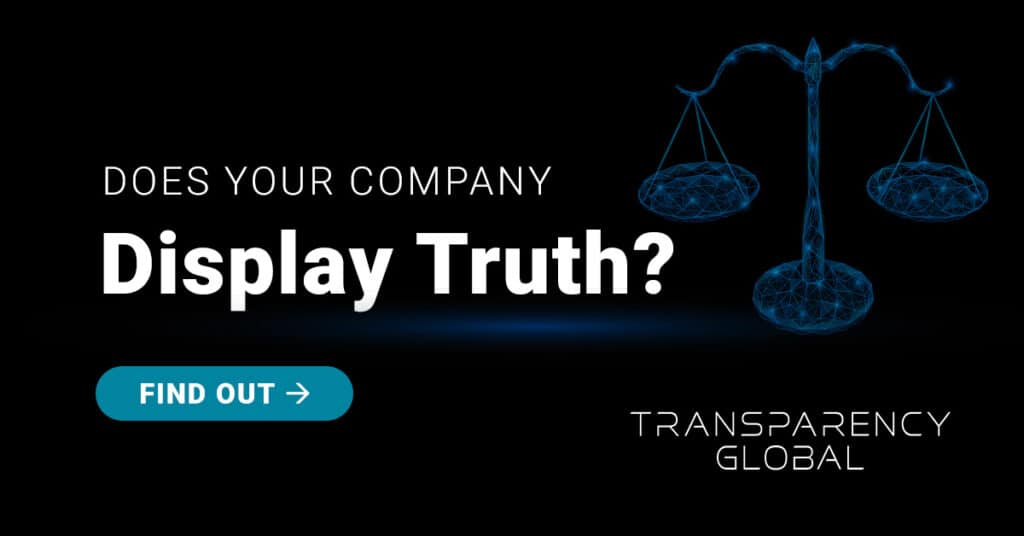Truth-based organizations are factual in their communication with all stakeholders, the public, and the environment, building their Transparency Mindset. From a young age we are taught to tell the truth. Why is it then, that so many people fear speaking the truth? Simple – they are afraid of negative consequences. Towards the harshest end of the consequence spectrum, companies could get sued and employees could lose their jobs. We challenge leaders to be brave and overcome those fears, and be empowered to make an impact, inspire others, and do what is right.
Figuring out how truthful a company actually is can be tricky because an ideal Truth doesn’t exist. According to Merriam-Webster, Truth is “the body of real things, events, and facts.” Kind of vague, right? Well, it’s vague for good reason. When digging for a deeper meaning of Truth, it is not cut-and-dry. It’s more like a range than one defined spot.
Research shows that we can define four areas of Truth on a scale from intending to be open and fully honest to consciously intending to deceive. But how does this translate into the truthfulness of a company?
Take a look at how many lawsuits a company has because that number will be an indicator of how often the company has or has not been truthful with its stakeholders, the public, or the environment. Lawsuits, whether criminal or civil, signal the extent to which a company is being “called out” on deceiving the public. If a company has little to no lawsuits against it, odds are it’s truthful and doing what it says it’s going to do.
The foundation of any business is its people, so it’s no surprise that leadership needs to be the Truth exemplar and spread it through the company’s culture. But even if leaders intend to be truthful, the human element poses a problem. Leadership has a lot of Truth-based decisions on its hands every day. These humans could make an ineffective or outright wrong Truth-telling decision about whether all or some of the Truth should be told to keep the company’s economic and ethical interests in mind.
Buffer, a social media platform company, is known for its superior company culture and transparency, and a huge part of Buffer’s transparency is its truthfulness. Living up to its values, the company lists every employee’s compensation information in a publicly available spreadsheet.
But the truth doesn’t stop there! In addition to salaries, the spreadsheet includes raises, equity, internal emails, and Buffer’s finances and performance. Not only has this truthful practice brought recruiting and retention benefits, but it also helped Buffer fix an all-too-common issue: the gender pay gap. With a team of near 50/50 women and men as of March 2021, Buffer’s gender pay gap is only 5.46% compared to the national average of 18%.
Adding this level of Transparency is not only the right thing to do, it’s necessary. Moving toward the Truth–end of the continuum takes a ton of courage for both individuals and organizations, particularly with challenging issues, but in the end it’s always worth it.


